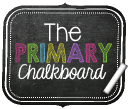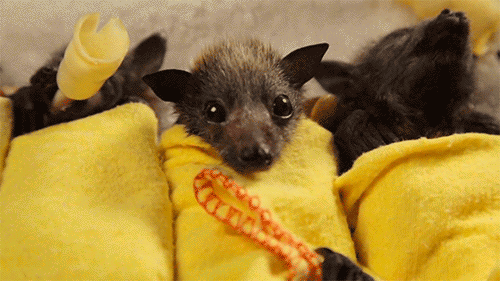This will be Part 1 in a series of posts that I will continue on my blog, Mrs. Rios Teaches. Let's start with the basics...
What is Inquiry-based learning?
When we think of the traditional learning model, we might think of a teacher at the head of the classroom, lecturing, and the students somewhat passively "absorbing" the facts and information that are being shared. The teacher then poses questions to his/her students. Students answer them, but very rarely ask their own questions.
In contrast, Inquiry-based learning takes the traditional learning model, and flips it on its head. Learning begins with a question or a problem, that is often generated by students. Teachers serve as facilitators, guiding students to resources and practices that will help them find the answers they are looking for.
The steps that I follow for inquiry are based on the work of Stephanie Harvey and Harvey "Smokie" Daniels. (Thanks here, to Amy Illingworth). They have written a wonderful resource on inquiry called Comprehension and Collaboration. (Click on the link below because it takes you to a great page full of printable resources and lesson samples.)
Steps include..
- Immerse
- Investigate
- Coalesce
- Go Public
Inquiry-based learning:
- develops research, problem-solving, and communication skills
- increases student responsibility for their own learning
- increases student engagement
- fosters independence
- provides opportunities for meaningful collaboration
- encourages students to tap into their natural curiosity
Inquiry-based learning can be used across all disciplines, including art, math, and language arts!
How do I start?
Ok, here's the big one, right? Well, there are lots of ways to go about inquiry-ish learning. Project-based, problem-based, and design-based learning are just a few that come to mind. Regardless, your first step is going to be PLANNING. So what do you need to do to get ready for inquiry-based learning?
1) Encourage Curiosity: Before you jump into a round of inquiry with your class, I recommend that you lay a strong foundation in "questioning" and the value of leading a "curious life". My school has a high ELL population, so we spend a lot of time in the beginning of the year, just practicing how to ask a question that is grammatically correct. But, I find that even my native English speakers need quite a bit of practice in asking authentic, and thoughtful questions.
Expect and encourage students to ask questions throughout the day. Visit websites that will play into their curiosity. We love frequenting a website called Wonderopolis ( http://wonderopolis.org ) This site is all about asking questions, and being curious about the things going on around us.
2) Look at your Curriculum: Take a look at where you can incorporate inquiry into your day.
- Look at what the "big ideas" are in your chosen subject area: While inquiry is largely student driven, teachers must focus the learning around appropriate grade-level goals. For example, I am preparing to do a round of inquiry in science (Mostly, I chose this area because it just naturally lends itself to questions, and always results in high student engagement.) One of the big ideas in our science curriculum is "life cycles".
3) Begin with an Essential Question: Our first round of inquiry for the year is very guided. I normally begin by "gently leading" my students towards an essential question that will focus our work around a "big idea". (I know this is a little bit of a "cheat". But, since this is usually my students' first experience with inquiry, I allow myself this little indulgence) So, going back to life cycles, my essential question will be: How do animals survive in their habitats?
A good essential question...
- is open-ended
- will spark curiosity and lead to further questions (I can pick one animal to use as a "guide animal". I will be choosing bats. But, after we have completed the round, students can repeat the inquiry cycle by researching the animal of their choice. Then, we can compare/contrast how different animals survive in their habitats to gain a deeper understanding of life cycles and adaptation.) In short, a good question will lead to more inquiry...Ha,Ha..See how that works?
- demands higher-order thinking (The answer to my essential question has several components, and will require students to synthesize a lot of information.)
- will lead learners to relevant and real-world issues (This question can lead to further inquiry into climate change, habitat destruction, and animals vs. human need)
- reflects true curiosity (meaning we don't already know the answer)
- can be answered
- does not have a yes/no answer, or just one simple answer
Need more guidance in forming your essential question. Check out... EssentialQuestions.org
4) Plan out the "learning skills" you want your students to learn. Yes, I want my students to learn about life cycles. But, that is actually not my main objective here. Remember, we are trying to teach students about "how to learn". So think about some of the skills you want your students to walk away with at the end of the inquiry cycle. In my case, I use inquiry to introduce students to how to: read non-fiction text, determine importance, use non-fiction features of text, write main idea/details paragraphs, question, collaborate, make presentations, paraphrase, find resources, summarize, and use technology. Plan for those lessons and activities. But, remember to be flexible. Teachers are co-learners, in many ways, with their students during an inquiry cycle. Often, you have to see what lessons the students lead you to.
5) Gather Resources: You will need to gather as many resources as you can in preparation for your inquiry cycle. I usually hit the public library. Don't forget to try and find a mix of non-fiction and fiction. We want our students reading a wide variety of text, and making connections. So, alongside non-fiction texts, I will be using a few favorite fiction titles like (affiliate links ahead)
I also look for age and topic-appropriate videos. In addition, you can plan for guest speakers and field trips. What about starting a Pinterest board? Here are a few of mine.
Finally, I browse the internet for appropriate sites where my students can safely conduct their research.
I highly recommend Symbaloo.com (See my webmix for animal inquiry, here.) It makes it so easy for students to access sites that you have pre-screened. Read more about how to use Symbaloo, here. Once again, be flexible. One of the skills that students should leave this experience with, is a knowledge of how and where, to find appropriate resources. So, part of your inquiry should leave room for students to bring in resources, as well.
6) Set Expectations: Collaboration is a huge component of most classroom inquiry circles, especially in the primary grades. So, setting some ground rules will be very important. We have always created ours as a class, and it is a living document, in that, it grows and changes throughout the year. Each time we engage in inquiry work, we always end our time with reflection. What worked? What didn't? What solutions do we have for obstacles that came up during our inquiry work?
Whoo! That was a lot. But, I'm going to stop there, and let you just "absorb". Join me next Sunday, October 18, 2015 over at Mrs. Rios Teaches, for the next post in this series on Inquiry.
Thanks for stopping by,
Nicole
























































